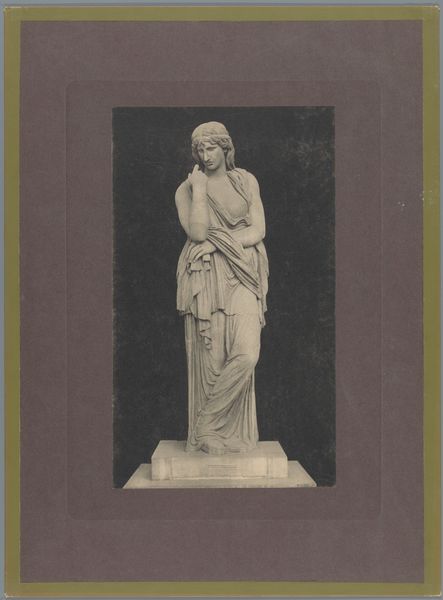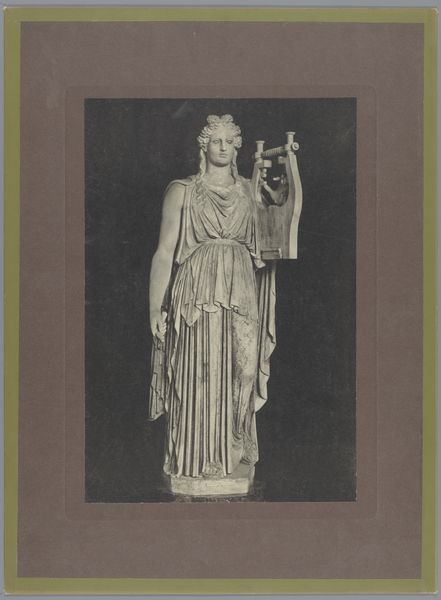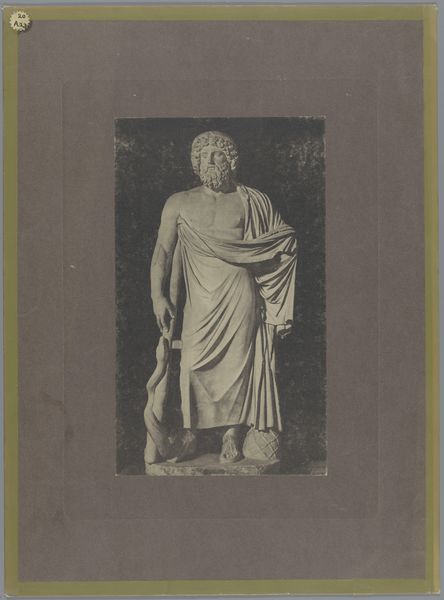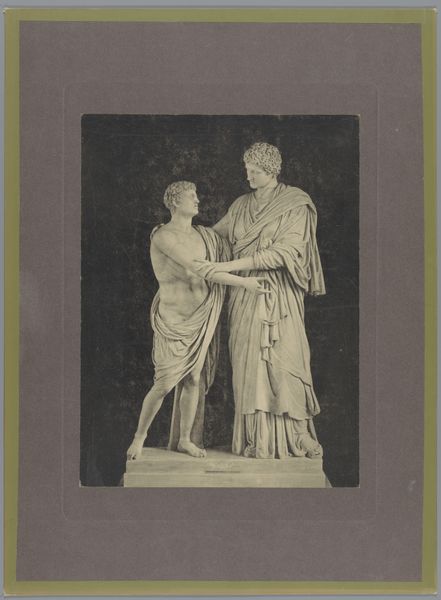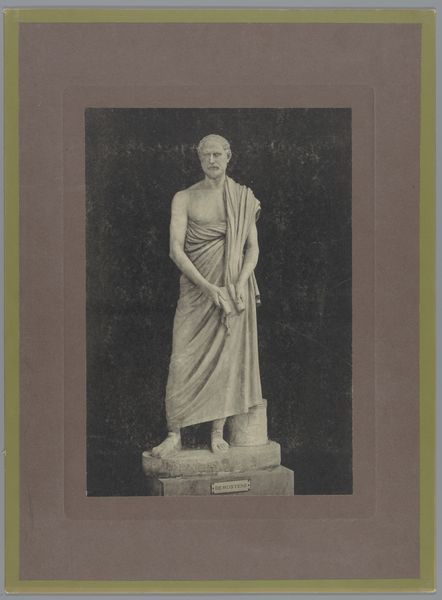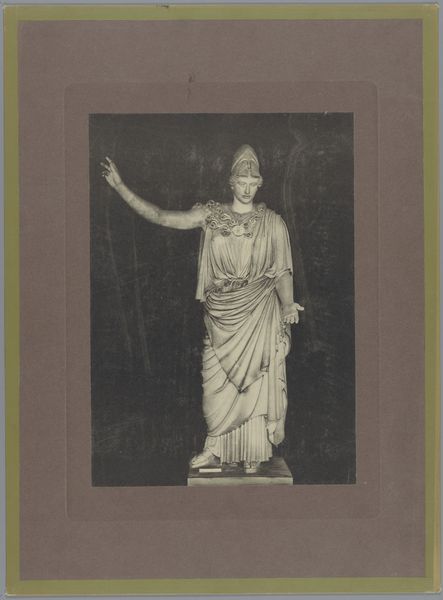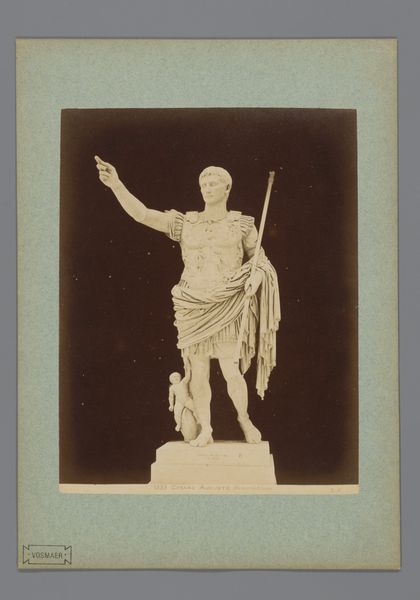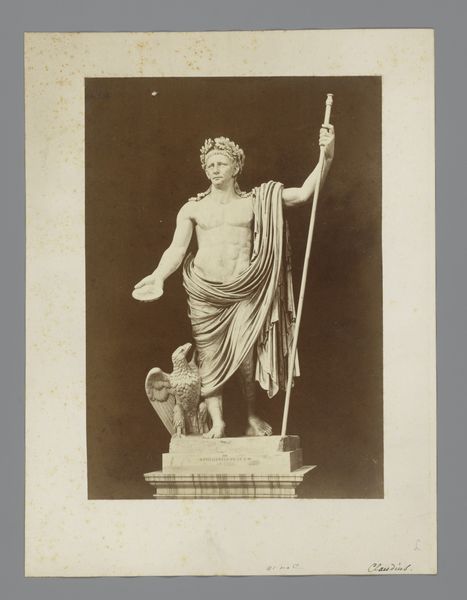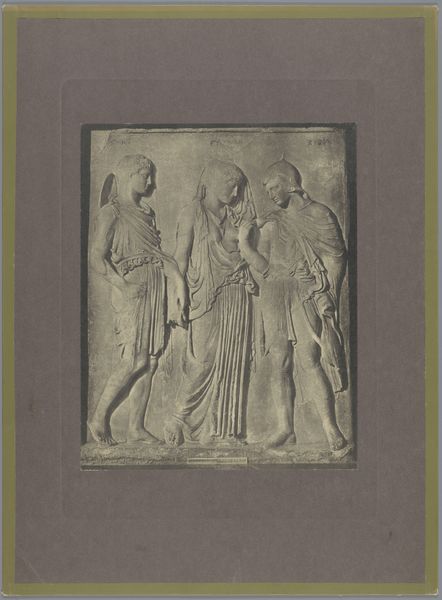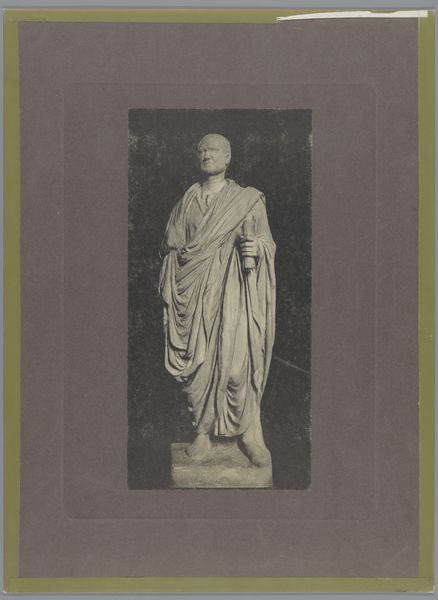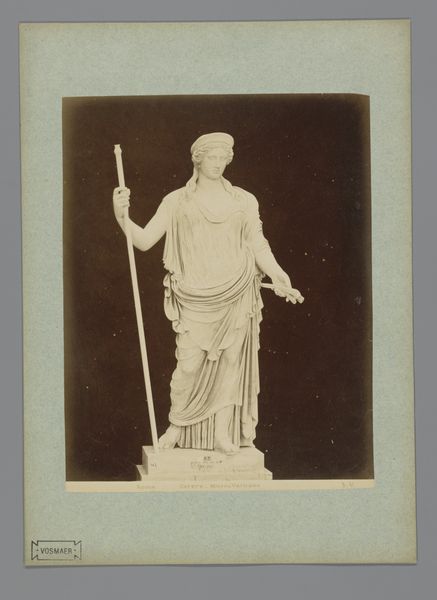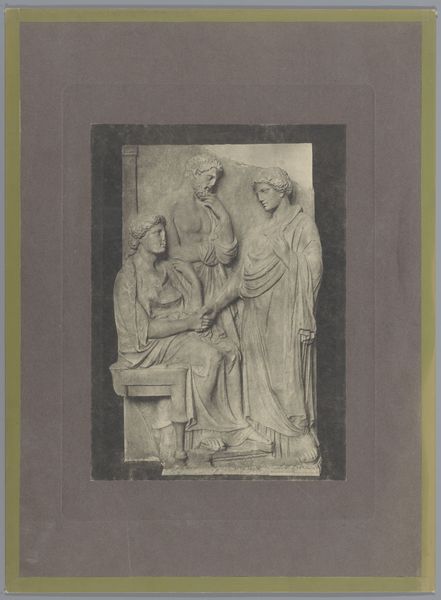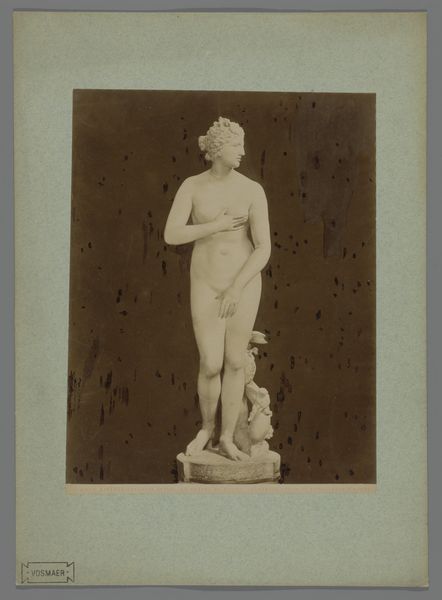
photography, sculpture, gelatin-silver-print, marble
#
portrait
#
greek-and-roman-art
#
classical-realism
#
figuration
#
photography
#
sculpture
#
gelatin-silver-print
#
history-painting
#
marble
#
realism
Dimensions: height 378 mm, width 254 mm
Copyright: Rijks Museum: Open Domain
Curator: Well, immediately what strikes me is the monumental stillness. The grayscale medium certainly adds to the statue's weight. Editor: Indeed. This is a photograph from 1896 documenting a sculpture titled "Eirene with Ploutos as a Child." It represents Eirene, the Greek goddess of peace, holding Ploutos, the god of wealth, symbolizing the prosperity that peace brings. Curator: The photograph certainly adds to the layers of meaning. Photography in this era was often used to document and disseminate classical forms, playing a key role in shaping public perceptions of classical ideals, and, therefore, societal order. It's a carefully constructed piece of propaganda, in a way, of ideal domesticity, law, and order. Editor: Exactly. Visually, notice how the sculptor captured Eirene's serene expression and flowing drapery. These recall idealized representations of women, but that lifted arm… It’s more like an averted expectation; maybe a beckoning. Is the arm actually saying, wealth, success are always attainable? Ploutos is usually represented carrying a cornucopia; his infant form makes me wonder how wealth could even be distributed responsibly? The emotional tension for me really makes the piece sing. Curator: That pose certainly holds symbolic weight. The photographic medium then helped solidify this kind of visual message across national lines through prints and distribution in magazines. Consider also how museums promoted and continue to promote narratives of national identity using pieces such as these, carefully arranging how cultures understood what they knew about antiquity. Editor: Looking closely, the texture created in the drapery and that in Ploutos' hair invites further consideration; almost urging viewers to consider a tactile experience. Perhaps reflecting upon that emotional connection between parent and child? I feel drawn back to the relationship with iconography, how this composition ties into wider understandings and beliefs about familial virtue. It gives enduring symbolic form to hopes and anxieties linked with heritage. Curator: I completely agree. Studying an object such as this allows one to question so many values circulating both within the art world but also within popular culture during that time. Thank you for such a detailed insight into the artwork, I leave this looking and thinking a bit differently. Editor: It was an enriching opportunity to re-imagine these art forms and think about the future; thanks.
Comments
No comments
Be the first to comment and join the conversation on the ultimate creative platform.
